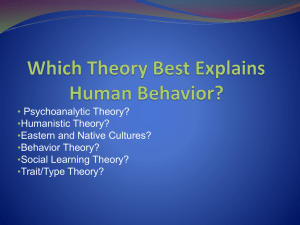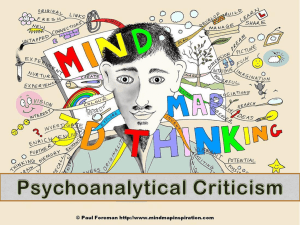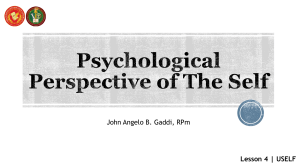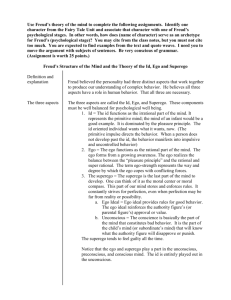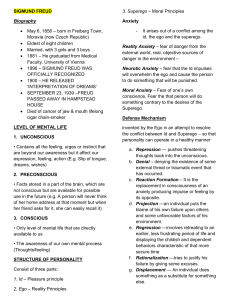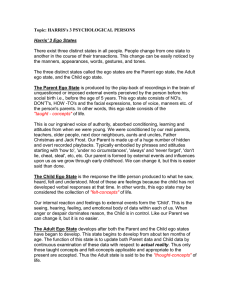In the Footsteps of Freud: The Ultimate Guide To Psychoanalytic
advertisement
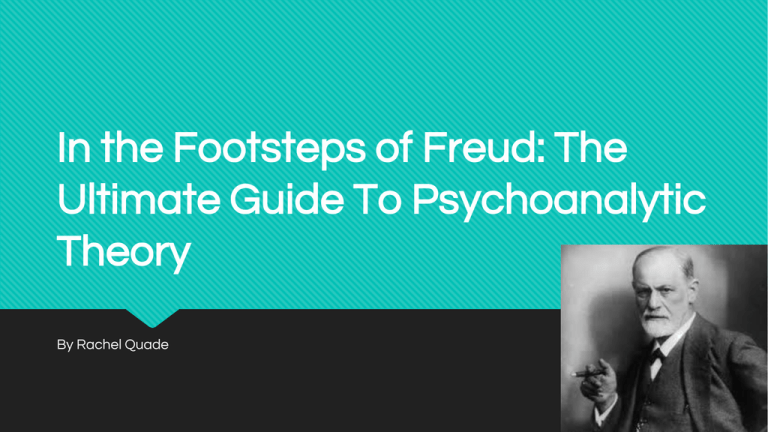
In the Footsteps of Freud: The Ultimate Guide To Psychoanalytic Theory By Rachel Quade Brief Summary Psychoanalytic Theory was proposed by Sigmund Freud. It’s often called a “talking cure” when used by psychologists, and language and narrative are fundamental to it. Psychoanalysis examines behaviour and what causes it. As a literary criticism, this theory seeks evidence of unresolved, subconscious emotions, psychological conflicts, guilty feelings, etc, through an author’s writing. It claims that a literary text is an expression of an author’s own psychological state. The psychoanalytic criticism can be applied to the author, the text, the audience or the charactershowever, the characters in any work are often thought of as an extension of the author’s own psyche. ❑ SIGMUND FREUD- the original person who postulated the theory ❑ SUBCONCIOUS- the part of the mind of which a person is not aware ❑ I.D.-The id is the primitive and instinctive component of personality. It consists of all the inherited (i.e. biological) components of personality.The id is the impulsive (and unconscious) part of our psyche which responds directly and immediately to the instincts. ❑ EGO-The ego develops in order to mediate between the unrealistic id and the external real world. It is the decision making component of personality. Ideally the ego works by reason. The ego considers social realities and norms, etiquette and rules in deciding how to behave. Key Psychoanalytic Terms ❑ SUPER-EGO-The superego's function is to control the id's impulses, especially those which society forbids. It also has the function of persuading the ego to turn to moralistic goals rather than simply realistic ones and to strive for perfection. The superego consists of two systems: The conscience and the ideal self. The conscience can punish the ego through causing feelings of guilt. ❑ SYMBOLISM- use of symbols to represent ideas or qualities ❑ CONDENSATION- several thoughts/people represented in one single image Definitions found from http://literarydevices.net https://public.wsu.edu/~delahoyd/psycho.crit.ht ml http://www.simplypsychology.org/psyche.html ❑ DISPLACEMENT- anxiety located onto another image by means of association Common Questions ○ What does the work suggest about the psychological state of it’s author? ○ Are their words in the text that could be interpreted with a different or double meaning? What does this suggest about the authors subconscious? ○ Why can’t [author- eg. Bronte] portray any positive mother/father figures? ○ What is the conscious meaning of this text? What is the unconscious meaning? ○ What might an interpretation of a literary work mean about the psychological state of the reader? ○ What unconscious motives are operating in the main characters?

